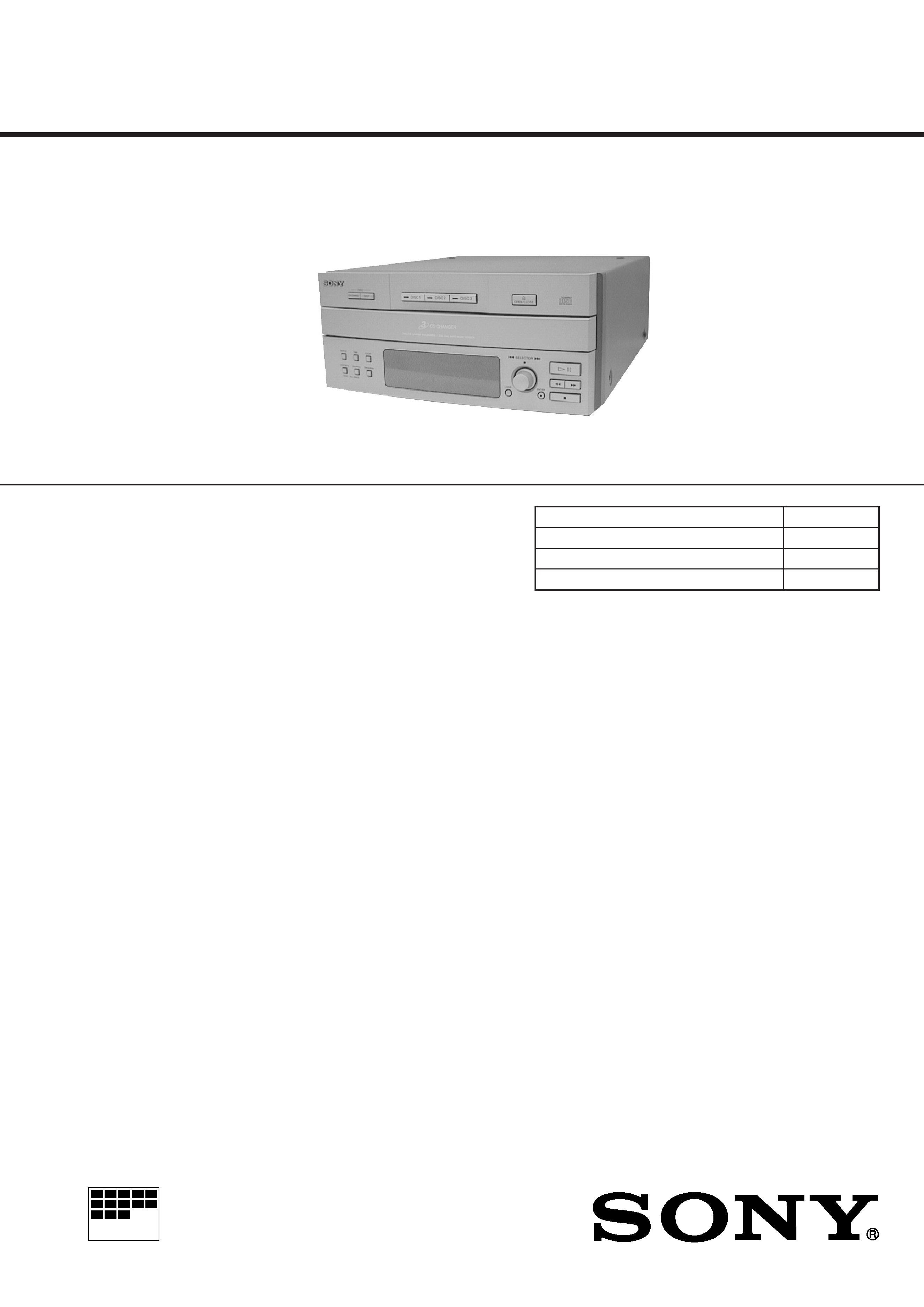
MICROFILM
CDP-EX77
COMPACT DISC PLAYER
SERVICE MANUAL
AEP Model
UK Model
E Model
CDP-EX77 is the CD player section
in MHC-EX66, DHC-EX77MD/MD77
Model Name Using Similar Mechanism
HCD-MD5
CD Mechanism Type
CDM38A-5BD19
Base Unit Name
BU-5BD19
Optical Pick-up Name
KSS-213B/K-N
SPECIFICATIONS
System
Compact disc and digital audio system
Laser
Semiconductor laser (
= 780 nm)
Emission duration: continuous
Laser output
Max. 44.6 µW*
* This output is the value measured at a distance of
200 mm from the objective lens surface on the Op-
tical Pick-up Block with 7 mm aperture.
Frequency response 2 Hz to 20 kHz (± 0.5 dB)
CD OPTICAL DIGITAL OUT
(Square optical connector jack, rear panel)
Dimensions (w/h/d) incl. projecting parts and
controls:
Approx. 280
× 122.5 × 347 mm
Mass
Approx. 3.7 kg
Design and specifications are subject to change without notice.
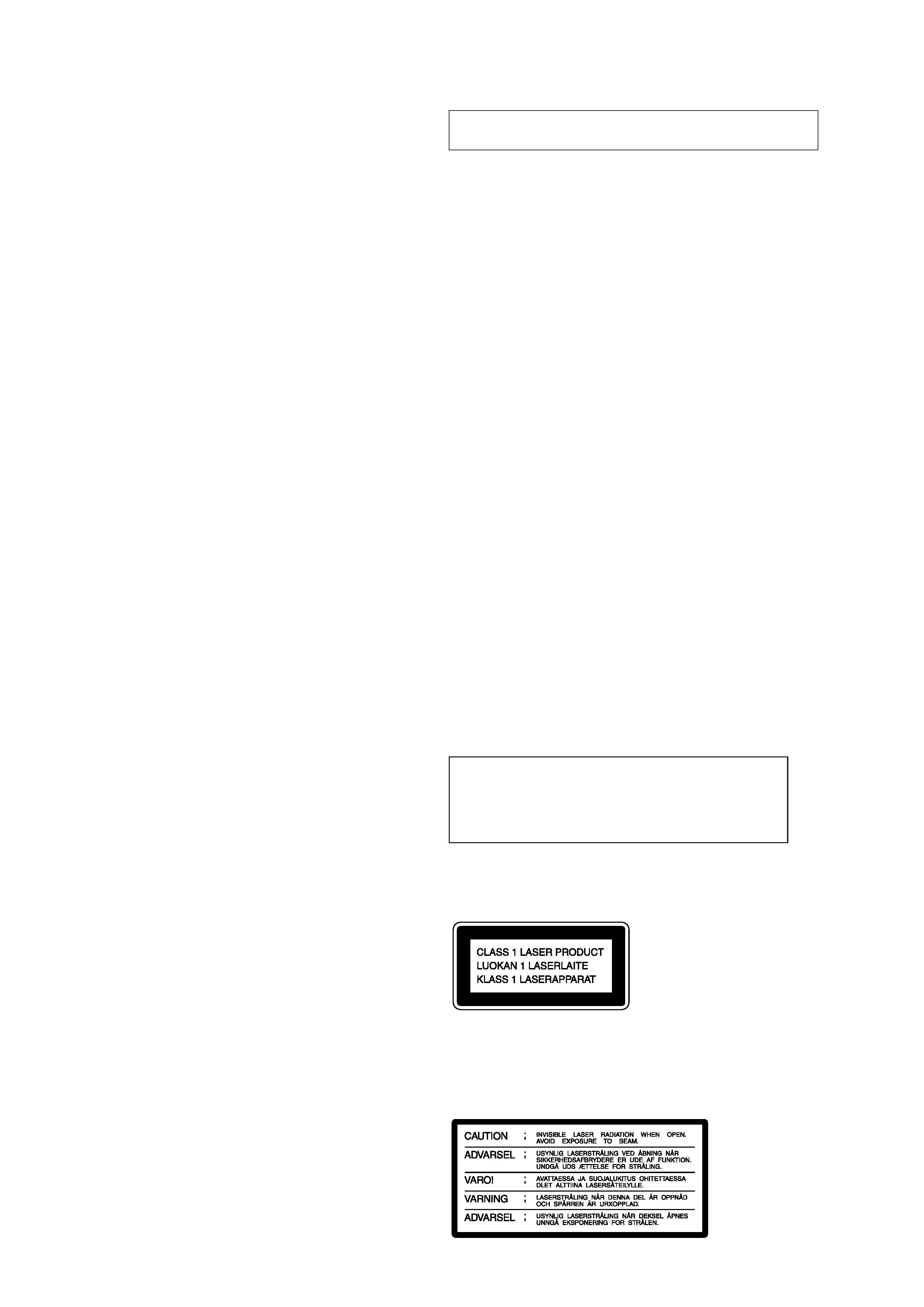
2
TABLE OF CONTENTS
1.
SERVICING NOTES
1-1.
Power Supply During Servicing ...................................... 3
1-2.
Fluorescent Indicator Tube/Key Check Mode ................. 3
2.
GENERAL ................................................................... 4
3.
DISASSEMBLY .......................................................... 9
4.
ELECTRICAL ADJUSTMENTS ......................... 14
5.
DIAGRAMS ................................................................ 16
5-1.
Printed Wiring Board BD Section ............................. 17
5-2.
Schematic Diagram BD Section ................................ 19
5-3.
Schematic Diagram
MAIN/PANEL/MOTOR Section .............................. 23
5-4.
Printed Wiring Boards
MAIN/PANEL/MOTOR Section .............................. 27
5-5.
IC Pin Function Description ............................................ 34
6.
EXPLODED VIEWS ................................................ 36
7.
ELECTRICAL PARTS LIST ................................ 41
NOTES ON HANDLING THE OPTICAL PICK-UP
BLOCK OR BASE UNIT
The laser diode in the optical pick-up block may suffer electro-
static break-down because of the potential difference generated
by the charged electrostatic load, etc. on clothing and the human
body.
During repair, pay attention to electrostatic break-down and also
use the procedure in the printed matter which is included in the
repair parts.
The flexible board is easily damaged and should be handled with
care.
NOTES ON LASER DIODE EMISSION CHECK
The laser beam on this model is concentrated so as to be focused
on the disc reflective surface by the objective lens in the optical
pick-up block. Therefore, when checking the laser diode emis-
sion, observe from more than 30 cm away from the objective lens.
This appliance is classified as a CLASS 1 LASER product.
The CLASS 1 LASER PRODUCT MARKING is located on
the rear exterior.
Laser component in this product is capable of emitting radiation
exceeding the limit for Class 1.
The following caution label is located inside the unit.
LASER DIODE AND FOCUS SEARCH OPERATION
CHECK
Carry out the "S curve check" in "CD section adjustment" and
check that the S curve waveforms is output three times.
CAUTION
Use of controls or adjustments or performance of
procedures other than those specified herein may
result in hazardous radiation exposure.
Notes on chip component replacement
· Never reuse a disconnected chip component.
· Notice that the minus side of a tantalum capacitor may be dam-
aged by heat.
Flexible Circuit Board Repairing
· Keep the temperature of the soldering iron around 270 °C dur-
ing repairing.
· Do not touch the soldering iron on the same conductor of the
circuit board (within 3 times).
· Be careful not to apply force on the conductor when soldering
or unsoldering.
SAFETY-RELATED COMPONENT WARNING!!
COMPONENTS IDENTIFIED BY MARK
! OR DOTTED LINE
WITH MARK
! ON THE SCHEMATIC DIAGRAMS AND IN
THE PARTS LIST ARE CRITICAL TO SAFE OPERATION.
REPLACE THESE COMPONENTS WITH SONY PARTS WHOSE
PART NUMBERS APPEAR AS SHOWN IN THIS MANUAL
OR IN SUPPLEMENTS PUBLISHED BY SONY.
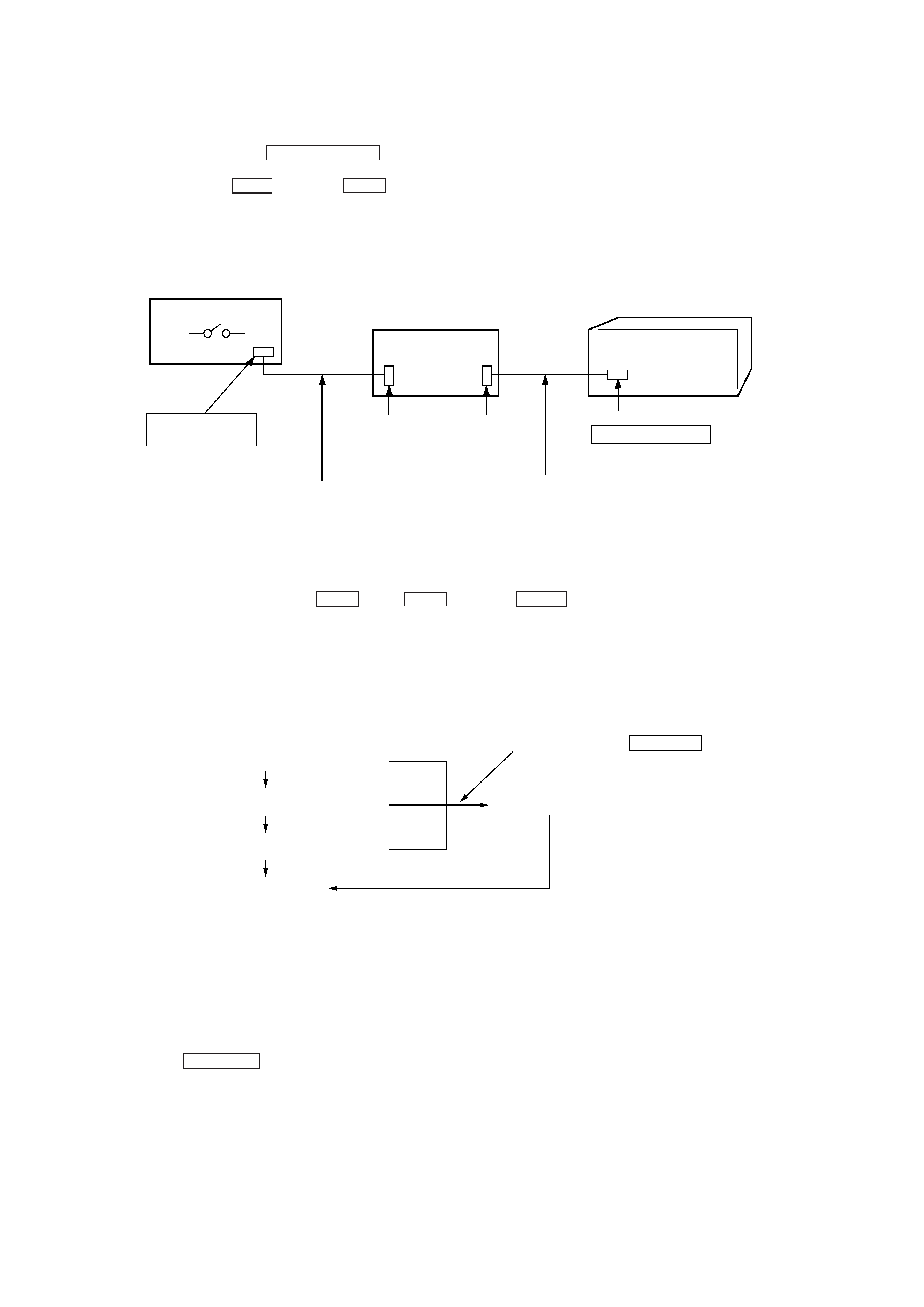
3
SECTION 1
SERVICING NOTES
1-1.
Power Supply During Servicing
This unit is not able to operate on its own because it does not have its own power supply. During servicing, connect to other units.
Power is supplied when the SYSTEM POWER button of the amplifier (TA-EX66/EX77) is turned ON.
If the other units are not available, use a service box (PFJ-1) and jig (J-2501-078-A).
In this case, press the STOP button and TIME button simultaneously to turn on the power.
[Connection Diagram]
FH-E939, 838, 937
CDP/TC
POWER SW
SERVICE BOX (PFJ-1)
JIG
(J-2501-078-A)
CN904
17P
CN902
7P
CORD WITH CONNECTOR 17 P
(Provided with PFJ-1)
CORD WITH CONNECTOR 7 P
(Provided with unit)
CN101 7P
SYSTEM CONTROL
UNIT (CDP-EX77)
1-2.
Fluorescent Indicator Tube/Key Check Mode
After turning on the power, press the STOP button, TIME button, and DISC 1 button simultaneously to perform the Fluorescent indi-
cator tube check.
The steps of the Fluorescent Indicator Tube check mode will proceed onto the next one by the above multiple pressing.
During the Fluorescent Indicator Tube check mode, press any button or rotate the selector knob to set the key check mode.
To end the mode, press the above three buttons simultaneously.
Note 1) When the three buttons pressed to enter the Fluorescent Indicator Tube all lit mode are released together, the Fluorescent Indica-
tor Tube all lit mode will remain on. When released separately, the key check mode will be set soon after the Fluorescent
Indicator Tube all lit mode.
In "multiple pressing", if the three buttons are pressed and released together, the next mode will be set. If not, the key check
mode will be set.
Note 2) In the key check mode, each time the button is pressed, the "KEY=" number on the Fluorescent indicator tube increases. When
the SELECTOR knob is rotated, the "KEY=" number on the Fluorescent indicator tube increases in the + direction and de-
creases in the direction.
Fluorescent Indicator Tube all lit mode
Multiple pressing
Segment pattern 1 mode
Multiple pressing
Segment pattern 2 mode
Multiple pressing
End of test mode
Key check mode
Press any key or roted the SELECTOR knob
Multiple pressing
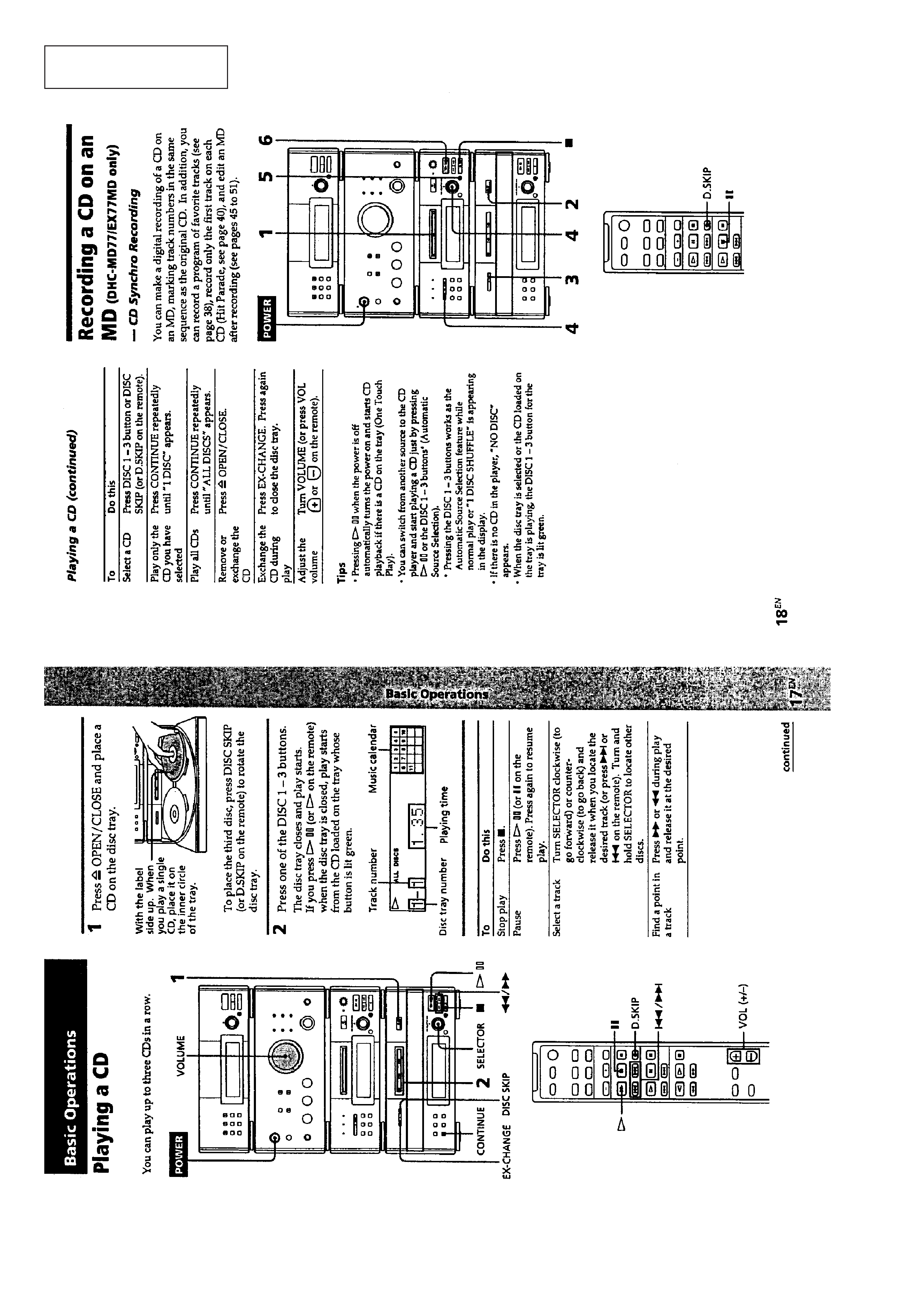
4
SECTION 2
GENERAL
This section is extracted
from instruction manual.
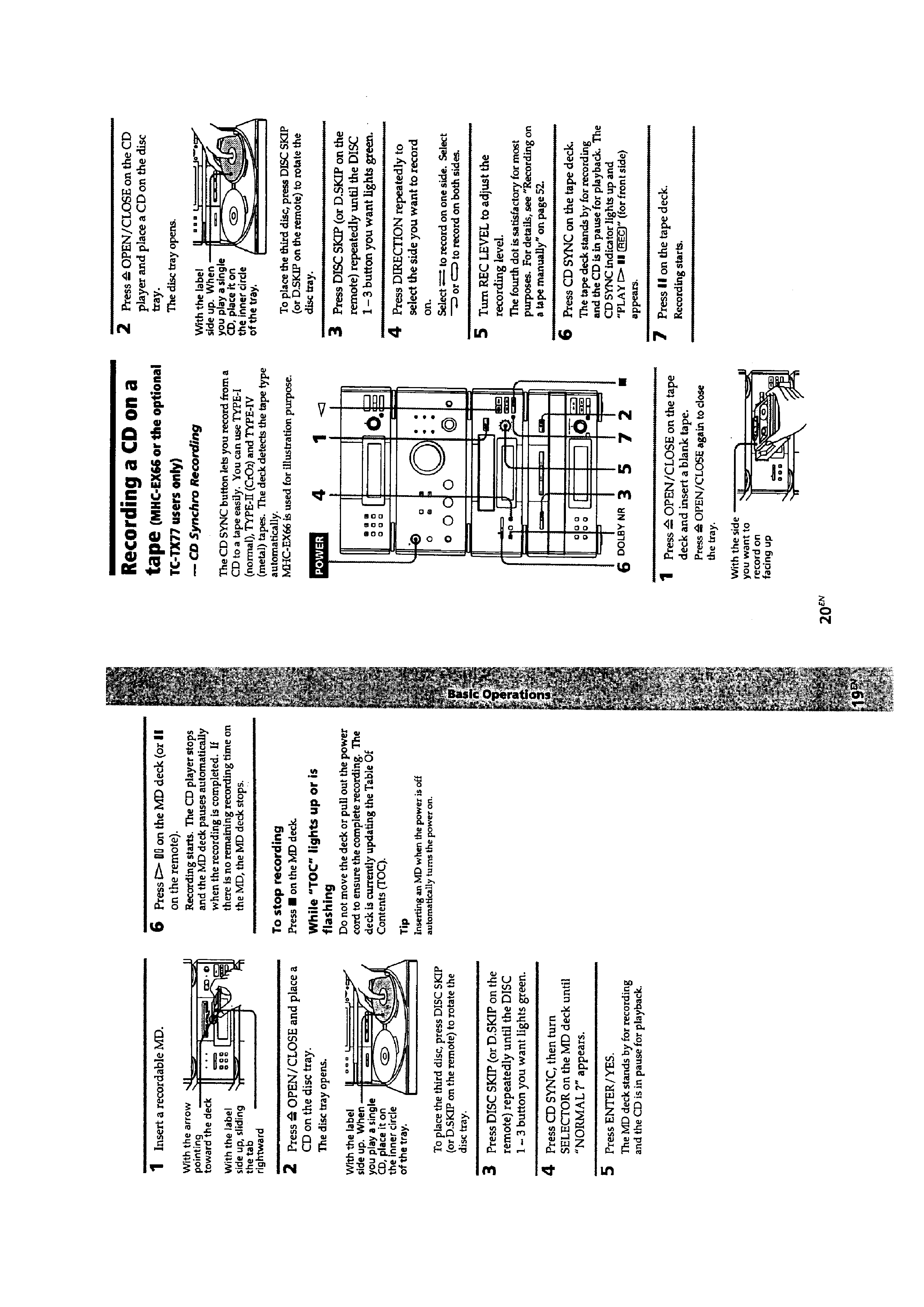
5
